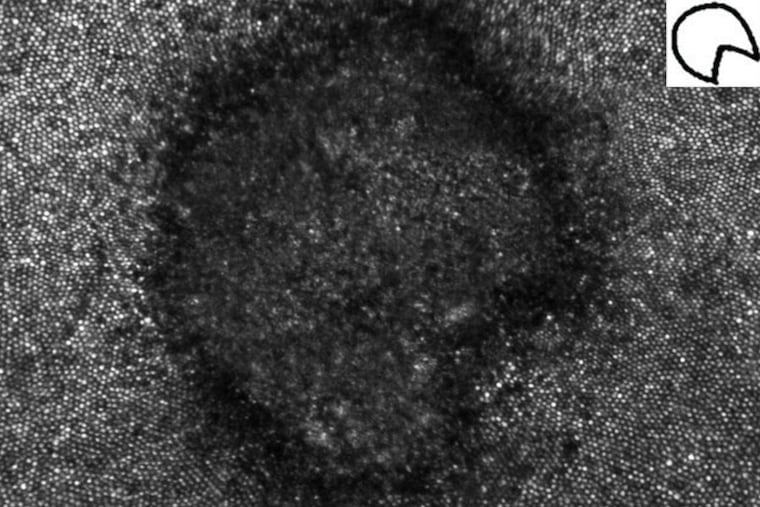The solar eclipse burned this woman's eye, leaving its imprint on her retina
The New York woman stared at the eclipse without protection, and her eyesight remained damaged six weeks later. A Pennsylvania man suffered damage as well.

Remember how eye doctors were warning people not to stare at the solar eclipse in August without proper protection?
A woman in her 20s gazed at the eclipse without any protection for 6 seconds, then again for up to 20 seconds while wearing dark glasses that apparently were not strong enough, according to a report in the journal JAMA Ophthalmology.
The alarming result: an eclipse-shaped spot was burned onto the retina of her left eye.
Advanced retina scans, performed at New York Eye and Ear Infirmary of Mount Sinai, revealed damage in the shape of the sun with the silhouette of the moon crossing its outer edge, study authors said. The woman described a corresponding "hole" in the center of her vision, sketching a similar shape that looked like a cookie with a bite out of it.
Her right eye was less severely damaged, her doctor said, because the left is her dominant eye.
The damage remained visible on follow-up scans that were performed six weeks later, said Avnish Deobhakta, retina surgeon at the Mount Sinai facility.
"It was an amazing concordance between what you would've seen in the eclipse and what actually was almost imprinted in terms of damage on her retina," he said.
A Pennsylvania man also suffered damage in one eye, though public details are scarce. That case was described to NPR by Ralph Chou, an expert on eclipse-related eye damage at the University of Waterloo.
"This young man had played it safe by only looking at the eclipsing sun with one eye," Chou told NPR. "He looked with one eye and he got fried."
Physicians do not yet know if the damage sustained by these two patients will be permanent, but the signs are not encouraging.
The woman treated at Mount Sinai has not undergone additional scans since her six-week follow-up visit, but recently told physicians by phone that the hole in her vision remains — more than three months after the eclipse that captivated viewers across the country.
And since her case was publicized, Mount Sinai physicians have been contacted by others who say they suffer lasting damage from looking at eclipses decades ago, Deobhakta said.
Looking at a solar eclipse is not inherently any more dangerous than looking at the sun under normal circumstances. The difference is that during an eclipse, the partly obscured sun appears less bright, so viewers may be under the impression that it is safe to look at. It is not.
Concerned for her vision after her initial naked-eye view of the eclipse — a series of glances totaling about 6 seconds — the New York patient then borrowed a pair of dark glasses from a fellow spectator. That is when the real damage seems to have occurred, Deobhakta said. The glasses apparently were not sufficiently protective, yet the woman looked through them for 15 to 20 seconds.
"It was brighter than she would have thought," Deobhakta said. "She could still see other structures in the environment outside of the eclipse."
With proper eclipse glasses, the viewer can see only the outline of the sun, while the sky surrounding it appears pitch black. The woman did not know the brand name of the glasses she borrowed, but the resulting damage suggests they could have been one of several unapproved, counterfeit models that were on the market in the weeks leading up to the Aug. 21 event.
The woman's eye damage occurred primarily in the light-sensitive cells called cones, which enable the perception of color. The sophisticated scanning equipment used to detect the damage has become available only in the last five years — repurposed from technology used in space telescopes, Deobhakta said.
The Mount Sinai physician said he and his colleagues were expecting more cases of eclipse-related injury, but saw just the one woman who suffered lasting damage. Two other patients experienced mild symptoms that have since cleared up. He attributed the low number of patients to widespread warnings in the media.
Stay tuned for similar warnings in seven years. Star-gazers will have another chance to see a solar eclipse in 2024.